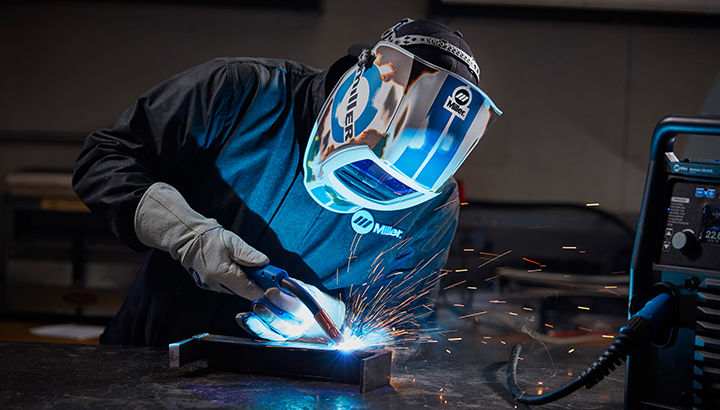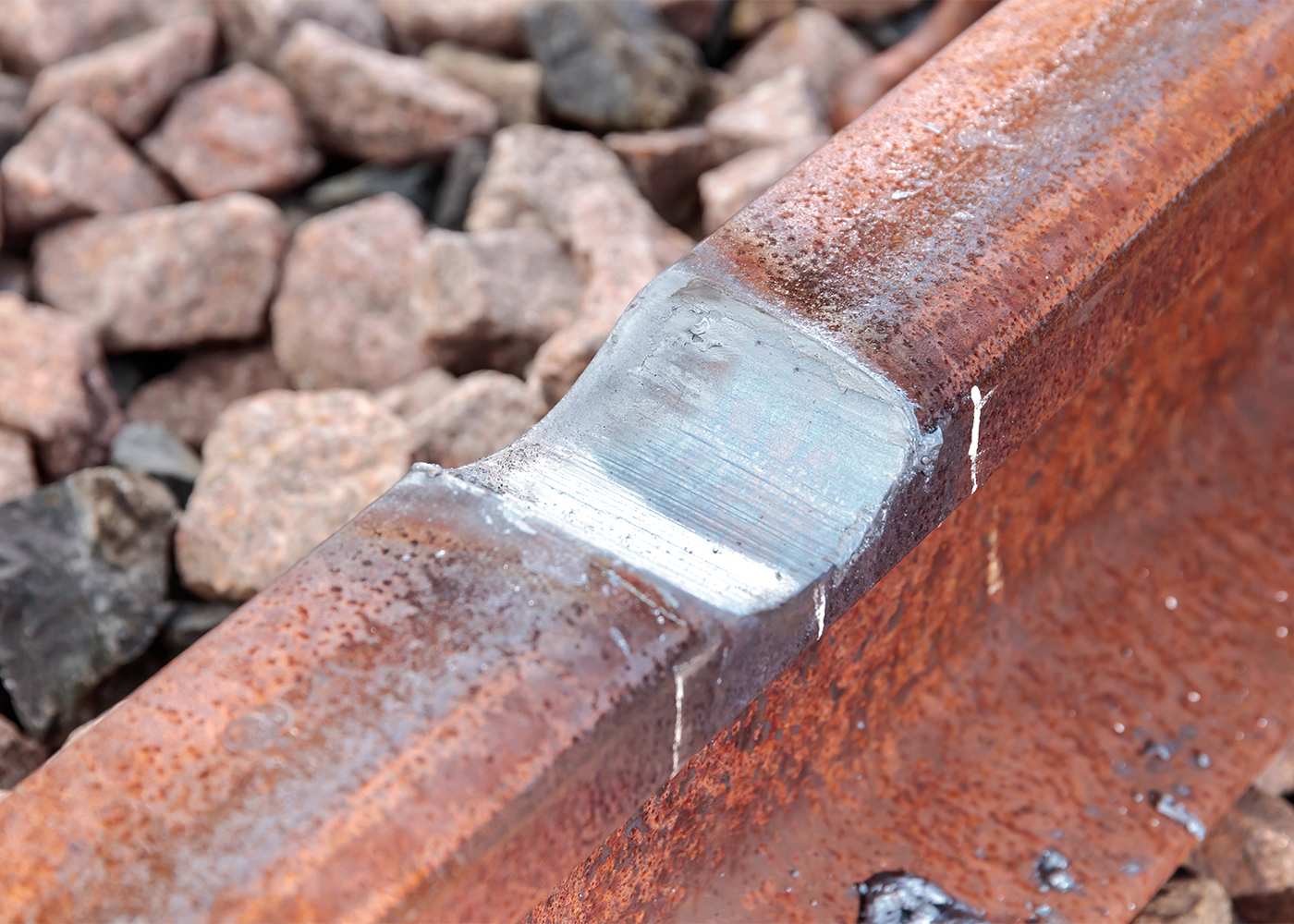Usual Welding Repair Work Issues and Just How to Address Them Properly
Welding repair work frequently run into a series of issues that can threaten the integrity of the last product. Common problems consist of insufficient infiltration, porosity, and imbalance, among others. Each problem offers one-of-a-kind obstacles that call for details strategies for resolution. Recognizing these problems is necessary for welders intending to enhance their abilities and results. This conversation will explore these usual welding repair problems and reliable approaches to address them.
Insufficient Penetration
Inadequate infiltration occurs when the weld metal stops working to totally fuse with the base material, resulting in weak joints and possible structural failures. This problem often comes from not enough warmth input, wrong electrode angle, or inappropriate welding rate. Welders may come across poor penetration due to a mistake of the necessary parameters for a specific material thickness or type. In addition, contamination on the base product's surface area can prevent effective bonding, intensifying the problem. To attend to insufficient penetration, welders must guarantee ideal settings on their devices and keep a clean job surface. Routine examination of welds is suggested to identify any kind of deficiencies early, permitting timely improvements and the prevention of jeopardized structural honesty in welded settings up.
Porosity
Porosity is a common flaw in welded joints that materializes as little gas bubbles caught within the weld metal. This defect can jeopardize the integrity of the weld, resulting in reduced strength and potential failure under anxiety. Montana Mobile Welding and Repair. Porosity normally develops from contamination, dampness, or inappropriate welding methods, which permit gases to leave into the molten weld pool. To resolve porosity, welders need to guarantee proper surface prep work, maintain a clean working atmosphere, and utilize suitable welding parameters. In addition, selecting the appropriate filler material and securing gas can alleviate gas entrapment. Normal inspection and testing of welds can help determine porosity early, guaranteeing prompt restorative actions are taken, thus protecting the quality and reliability of the bonded framework
Misalignment
Misalignment in welding can develop from various variables, including incorrect setup and thermal growth. Understanding the origin is essential for efficient resolution. Several modification strategies are offered to straighten parts and ensure architectural stability.
Reasons of Imbalance
Welding imbalance commonly stems from a selection of underlying problems that can endanger structural integrity. One key reason is incorrect fit-up of components before welding, which can bring about gaps and unequal surface areas. Variations in thermal development throughout the welding process can likewise cause distortion, specifically if the materials being joined have different coefficients of growth. Additionally, poor fixturing and securing may fail to hold elements firmly in location, resulting in movement during welding. Inadequately maintained tools, including welding devices and tools, might present inconsistencies in the weld grain, further adding to misalignment. Driver error, stemming from inadequate training or experience, can likewise play a considerable function in creating misaligned welds.
Adjustment Methods Available
Attending to misalignment efficiently calls for a mix of corrective strategies tailored to the particular problems available. One common method is making use of jigs or fixtures to hold components in the right placement throughout welding, ensuring constant positioning. Additionally, pre-heating the materials can aid decrease distortion and enhance fit-up. For considerable misalignment, mechanical realignment strategies, such as using hydraulic jacks or clamps, can be used to fix the position before welding. Post-weld warm treatment might likewise be essential to eliminate stresses brought on by imbalance. Careful evaluation and adjustment during the setup stage can prevent misalignment problems from coming to be significant troubles, advertising a smoother welding procedure and boosting general architectural stability.
Distortion
Distortion is a common difficulty in welding that can arise from various variables, consisting of unequal heating & cooling. Comprehending the reasons of distortion is necessary for implementing efficient prevention strategies. Addressing this problem not only boosts architectural honesty but likewise enhances the total top quality of the weld.
Root causes of Distortion
When subjected to the intense heat of welding, materials frequently undergo adjustments that can lead to distortion. This phenomenon mostly occurs from thermal expansion and tightening throughout the welding process. As the weld area warms up, the product increases; upon cooling, it contracts, which can produce internal stress and anxieties. In addition, unequal heating throughout a workpiece can exacerbate these stress and anxieties, causing warping or bending. The type of product additionally plays a considerable duty; steels with varying thermal conductivity and coefficients of expansion may respond in different ways, leading to unpredictable distortions. Moreover, bad joint layout and inadequate fixturing can add to misalignment throughout welding, boosting the chance of distortion. Understanding these reasons is necessary for efficient welding repair work and avoidance strategies.
Prevention Techniques
Efficient prevention strategies for distortion during welding focus on managing warmth input and making sure correct joint design. Maintaining a consistent warm input assists to minimize thermal expansion and tightening, which can bring about distortion. Making use of strategies such as preheating the work surface can additionally minimize the temperature level slope, promoting consistent home heating. In addition, picking proper joint designs, such as T-joints or lap joints, can enhance security and reduce stress focus. Implementing proper fixturing to safeguard plastic soldering the workpieces in position even more help in maintaining positioning throughout the welding process. Staggered welding series can disperse warm more evenly, avoiding local distortion. By using these approaches, welders can substantially reduce the probability of distortion and enhance the overall top quality of their welds.
Fracturing
Cracking is an usual concern encountered in welding repairs, frequently arising from different aspects such as improper air conditioning rates, material choice, or inadequate joint prep work. The incident of splits can greatly endanger the stability of the weld, causing potential failings throughout procedure. To resolve this concern, welders should first examine the origin causes, making sure that products are compatible and properly picked for the details application. Additionally, controlling the air conditioning rate throughout the welding process is important; quick air conditioning can induce tension and lead to fracturing. Correct joint layout and prep work also add to lessening the risk. Implementing these approaches can enhance weld top quality and longevity, inevitably lowering the likelihood of fracturing in completed weldments.

Insufficient Combination
A substantial issue in welding repairs is incomplete combination, which takes place when the weld steel does not sufficiently bond with the base material or previous weld passes - Belgrade Welding. This problem can bring about weaknesses in the joint, potentially compromising the honesty of the bonded structure. Aspects adding to incomplete fusion consist i thought about this of insufficient warm input, inappropriate welding method, and contamination of the surface areas being joined. To address this issue properly, welders need to guarantee appropriate pre-weld cleansing and surface preparation, along with change their welding criteria to accomplish ample infiltration and combination. Regular examination throughout the welding procedure can additionally aid identify incomplete blend early, permitting prompt corrective procedures to improve the overall quality of the weld
Overheating
While welding repair work can improve architectural honesty, overheating presents a considerable difficulty that can bring about material deterioration. Excessive heat throughout welding can alter the mechanical residential or commercial properties of steels, causing decreased stamina, enhanced brittleness, and warping. This sensation is specifically crucial in high-stress applications where structural dependability is critical. Determining getting too hot can include visual inspections for staining or distortion, in addition to keeping track of temperature throughout the welding process. To reduce the dangers related to getting too hot, welders need to utilize proper methods, such as managing warmth input, adjusting travel rate, and using appropriate filler products. Furthermore, applying pre- and post-weld heat treatments can assist recover material properties and enhance the total quality of the repair, ensuring lasting performance and safety.
Regularly Asked Questions
What Are the Common Indications of a Welding Defect?

How Can I Test My Welds for Quality?
To evaluate welds for high quality, one can make use of aesthetic examinations, ultrasonic testing, and radiographic techniques. Each method assures structural stability, determines issues, and confirms adherence to defined criteria, ultimately enhancing the integrity of the bonded joints.
What Safety and security Preventative Measures Should I Take While Welding?
When welding, one should prioritize security by putting on proper individual safety devices, making sure appropriate ventilation, securing flammable materials away, maintaining a clean work space, and being conscious of surroundings to avoid injuries and crashes.
Can I Repair a Weld Without Redesigning the Entire Joint?
Fixing a weld without redesigning the entire joint is feasible, depending upon the damage (Belgrade Welding). Methods such as grinding, including filler material, or making use of a welding procedure can successfully deal with specific flaws while protecting the surrounding structure
What Devices Are Vital for Efficient Welding Repair Works?
Crucial tools for reliable welding repair work include a welding equipment, cord brush, mill, protective equipment, clamps, and filler materials. Each tool plays an essential function in guaranteeing quality and safety and security throughout the repair work procedure. Porosity commonly occurs from contamination, dampness, or incorrect welding strategies, which enable gases to escape right into the liquified weld swimming pool. Improperly maintained devices, including welding equipments and tools, might present inconsistencies in the weld grain, more adding to misalignment. When subjected to the intense warm of welding, materials frequently undertake adjustments that can lead to distortion. Cracking is a common concern run into in welding repair work, usually resulting from numerous aspects such as improper cooling prices, product selection, or poor joint preparation. A substantial concern in welding repairs is insufficient blend, which happens when the weld steel does not appropriately bond with the er4043 base material or previous weld passes.